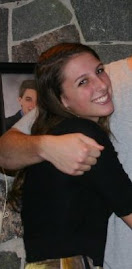
North Kingstown's Infoworks

The first grade classroom that I am in there is about 25 students, the ethnicities and gender is all different. There is an equal amount of boys and girls per class. The statistics from info works show that 81% of students are eligible for reduce lunch. This amazes me, when I look at the elementary school I went to only 6% are eligible. I being in the school have opened a whole new light for me. I feel that I have been sheltered and was not aware of the diversity in city school. Also 57% are Hispanic, 25% are African American, 16% Asian, and only 6% white. In my elementary school there is 96% white, 2% Asian, and 1% Hispanic. The drastic difference amazes me. There is 26% of ESS students in the city school, where 0% in the elementary school I attended. These are just some statics of the drastic diversity between city schools and suburban school.
It amazed me one day on a Friday; every classroom had to decorate their door. It was all based on Rhode Island, talking to the children about what they wanted to put on the door, and what they knew about Rhode Island I was so surprised. They knew so much about the history behind Rhode Island. They decided to do and ocean team, of clams, lobsters, and light houses. They also made a state flag. They knew how many stars, and colors. I was so surprised that first grade students knew this.
The students all bring something new to the table. Every student learns from one another. For example there is a student from Africa, she speaks broken English and has trouble with certain letters. But she is a very brilliant little girl. I can tell she comes from a not so fortunate family. She talks a lot about her home in Africa. I feel the other kids are so enthused because she comes from a different place. Kids also understand the stereotype of Africa is not what is seems, and that nice smart people can come from there.
Brown talks about the differences that girls face in society. You have the girls who come from less fortunate families who are look down upon and have the stereotype of being laid back, expected to have the same life their parents did ( never get out of the rut), do not care, and do not try. Then she talks about the rich to middle class girls as being aggressive, they will argue, always get what they want, and spoiled. These two different social classes have two way different experiences. She talks about the Metonymic fallacy which is to portray white middle class woman’s experiences as a whole of women history and experience. She wanted to contribute to broader attempts to mark out differences within whiteness, to understand how the construction of whiteness varies across lines of class. Teachers need to realize where these students are coming from. The teacher needs to realize the background of students, and they need to be aware of where they come from. Need to understand and be understanding of different beliefs and be open to them



2 comments:
Hi Haley,
I loved how you compared this school to the school that you went to when you were little. I think it was a great idea! When I read about the children being fascinated by the little girl from Africa, the only thing that I could think of was the skit that one of the groups did for their theorist presentation. I pictured a bunch of students asking her lots of questions and listening intently while she answered them. I think it’s really great that they’re so accepting of her even though she comes from a different place, especially because they’re only in first grade. When a child learns to be accepting of others at a young age, it comes more easily to them as they get older.
I think you could connect to something that Allan Johnson said in the article “Our House is on Fire.” One of the first points that Johnson made was that difference is not the problem, and he goes on to say that human beings are fascinated (not repelled) by people whose appearance differs from their own. I think this is how it is with little kids; they don’t understand why some people have different skin colors or sound different when they speak, but they accept the person the way they are and talk to them anyway. As teachers, I think that we need to promote this idea and encourage our students to reach out to others, even if they look or sound different or come from different places.
Hi Haley,
You are on to something with your connection to Lyn Mikel Brown. I'm not sure your characterization of the working class girls is fully accurate. You say "laid back." The teachers found them outspoken and resistant. Your conclusion, however, is accurate. We do need to be aware of our students' backgrounds and their goals. We need to recognize the complexity of human experience.
I want to encourage you to reconsider the term "broken English." It comes from a deficit perspective--describing a child in terms of what she lacks.
Keep me posted,
Dr. August
Post a Comment